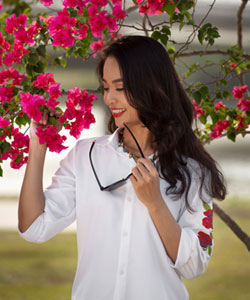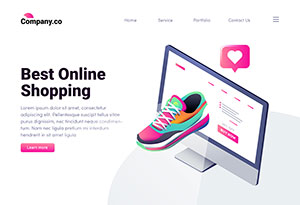
Sustainable Clothing Trends Taking Over 2025 Wardrobes
Welcome to a greener fashion future! As we embrace 2025, the “Sustainable Clothing Trends” are reshaping wardrobes worldwide, marrying style with sustainability. This comprehensive guide delves deep into the fibers of eco-friendly fashion, from innovative materials to ethical labor practices, revealing why this year is pivotal in the journey towards a sustainable fashion industry.
Introduction to Sustainable Clothing in 2025
As we move further into 2025, the fashion industry is witnessing an undeniable shift towards sustainability. This movement is driven by consumers’ growing environmental consciousness, as they seek eco-friendly options that align with their values.
- The rise of green consciousness in fashion
Over the past few years, consumers have become increasingly aware of the environmental impacts of their clothing choices. Brands have responded by adopting greener practices and focusing on eco-friendly materials. The rise of this green consciousness has reshaped how fashion is produced and consumed. - Why 2025 is the year of sustainable wardrobes
2025 is shaping up to be a watershed year for sustainable fashion. Technological advancements, regulatory changes, and increased consumer demand are all converging, making sustainable wardrobes more accessible than ever. Consumers are turning towards eco-friendly options, while brands are competing to meet this demand with innovative solutions. - Key drivers of sustainable fashion trends
Some of the main forces behind the rise of sustainable fashion include the push for transparency in the supply chain, consumer preference for eco-conscious products, and technological breakthroughs that make sustainable materials more viable. Check out how brands can enhance their e-commerce business by embracing these trends.
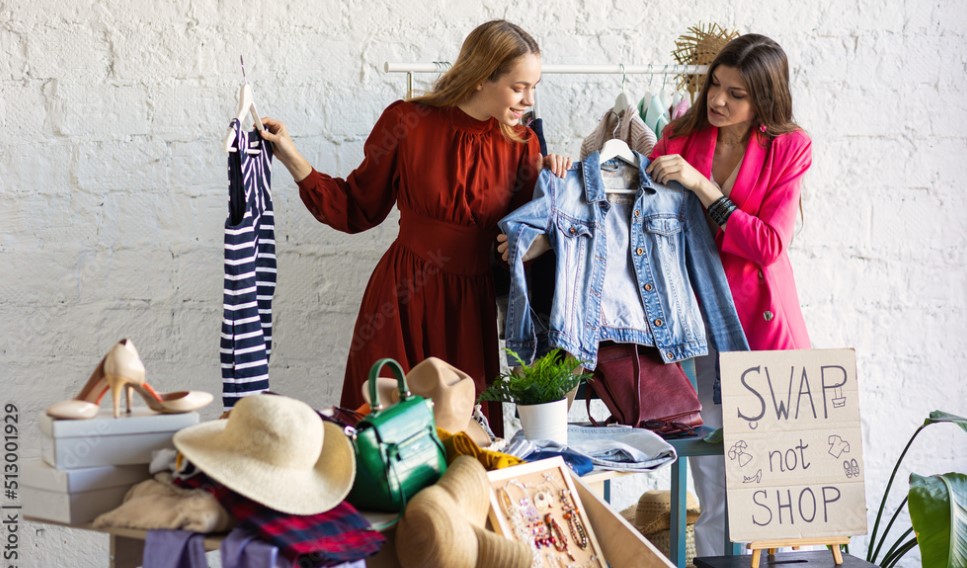
The Evolution of Eco-Friendly Fabrics
One of the key areas of innovation in sustainable fashion lies in the development of eco-friendly fabrics. Brands are moving away from traditional textiles, opting for materials that have a lower environmental impact.
- Innovations in organic cotton production
Organic cotton is leading the charge in sustainable textiles. With advancements in cultivation practices, organic cotton is now grown using fewer pesticides and less water, resulting in a smaller ecological footprint. - The resurgence of hemp in mainstream fashion
Hemp is experiencing a revival as a sustainable fabric due to its durability, versatility, and low environmental impact. Hemp requires fewer resources to grow than conventional cotton, making it an attractive option for eco-friendly fashion brands. - Development of new biodegradable synthetic fibers
Traditional synthetic fibers like polyester and nylon are notorious for their environmental harm, but new biodegradable alternatives are being developed. These synthetic fibers mimic the performance of traditional fabrics while breaking down naturally over time.

Spotlight on Vegan Leather Alternatives
Vegan leather alternatives have gained traction as sustainable and cruelty-free options for fashion lovers who want to avoid animal products.
- What’s new with mushroom and cactus leathers?
Mushroom and cactus leathers are two of the most exciting innovations in the vegan leather space. Both materials offer a sustainable alternative to traditional leather, using less water and energy in their production. - The performance and durability of plant-based leathers
Plant-based leathers are becoming more durable and versatile, offering similar performance to animal leather. These materials are now being used in everything from handbags to jackets, making them a popular choice for eco-conscious consumers. - Consumer reception and market growth of vegan leathers
As more consumers prioritize ethical and sustainable fashion, the market for vegan leathers continues to grow. Find out how ghost mannequin photography can help showcase vegan leather products, boosting sales for ethical brands.

The Role of Recycled Materials in Fashion
Recycling materials to create new garments is one of the most effective ways to reduce waste and promote sustainability in fashion.
- How brands are turning plastic bottles into chic outfits
Some innovative fashion brands are turning post-consumer plastic, such as water bottles, into fashionable garments. This not only helps reduce plastic waste but also demonstrates the potential of recycling in the fashion industry. - The technology behind recycling old garments
Recycling textiles can be a complex process, but advancements in technology have made it easier to recycle old garments into new, high-quality fibers. Brands are adopting these technologies to create closed-loop systems, reducing their reliance on virgin materials. - Success stories: Brands leading with recycled materials
Brands like Patagonia and Adidas are setting the standard in using recycled materials to create stylish, high-performance clothing. These brands are leading the charge in turning waste into fashion, showing that sustainability and style can go hand in hand.
Zero Waste Design Techniques
Zero waste design is a revolutionary approach to fashion, aiming to eliminate textile waste at the design and production stages.
- The principles of zero waste pattern making
Zero waste pattern making is a technique that ensures every scrap of fabric is used, leaving no waste behind. Designers carefully plan patterns to make the most efficient use of materials, resulting in garments that are both stylish and sustainable. - Designers who excel at waste reduction
Designers like Zandra Rhodes and Eileen Fisher are leading the way in zero waste fashion, creating collections that are as eco-friendly as they are beautiful. These designers are setting a new standard for sustainability in fashion. - Consumer impact: Choosing zero waste garments
By choosing zero waste garments, consumers can directly support brands that prioritize sustainability. Learn how product photo editing can enhance the appeal of zero waste collections, helping brands attract eco-conscious shoppers.
Water Conservation in Clothing Production
Water conservation is a critical issue in fashion, as traditional textile production is often water-intensive. New technologies and practices are helping to reduce water use in the industry.
- New technologies reducing water usage in textile production
Technologies like waterless dyeing and closed-loop water systems are being adopted by brands to minimize water consumption during production. These innovations are helping to make fashion more sustainable without compromising on quality. - Case studies: Brands making a splash with water conservation
Brands like Levi’s and Stella McCartney have implemented water-saving techniques in their production processes, proving that sustainability and innovation can go hand in hand. These companies are leading by example, encouraging the rest of the industry to follow suit. - How consumers can participate in water-saving initiatives
Consumers can support water conservation by choosing brands that prioritize sustainable practices and by opting for garments that require less water to produce.
Energy Efficiency in the Fashion Industry
Reducing energy consumption is another essential aspect of sustainability in fashion. Brands are investing in energy-efficient technologies to reduce their carbon footprint.
- Advances in solar-powered manufacturing
Solar-powered factories are becoming more common in the fashion industry, offering a renewable energy solution that reduces reliance on fossil fuels. This shift is helping brands lower their carbon emissions and contribute to a cleaner, greener future. - The shift to low-energy production facilities
In addition to renewable energy, many fashion brands are investing in energy-efficient production methods, reducing their overall energy consumption. These initiatives are making the industry more sustainable from the ground up. - Comparing the carbon footprints of leading fashion brands
As consumers become more environmentally conscious, they are paying closer attention to the carbon footprints of the brands they support. Using ghost mannequin services to enhance product photography can help brands effectively showcase their sustainable practices while attracting eco-conscious buyers.
Ethical Labor Practices in Sustainable Fashion
As sustainability becomes a priority for fashion brands, ethical labor practices are taking center stage. Ensuring fair treatment and transparency in the supply chain is essential to creating genuinely sustainable clothing. Here’s how brands and consumers alike are making a difference:
- Transparency in the supply chain: Who made my clothes?
More brands are answering this question, driven by the global Who Made My Clothes? movement, demanding transparency from manufacturers. - The rise of fair trade certifications in apparel
Certifications like Fair Trade ensure that workers are paid fairly and work in safe conditions, providing assurance to eco-conscious consumers. This rise reflects a growing market for ethically-produced apparel. - Stories from the field: Workers behind the ethical fashion scene
Ethical fashion is more than just materials—it’s about the workers. Brands are increasingly highlighting the stories of garment workers, adding a human face to sustainable fashion.
Dyeing Clothes Without the Environmental Cost
Dyeing fabrics has historically been a toxic process, but innovations in natural and organic dyes are transforming this essential part of fashion production:
- Breakthroughs in natural and organic dyes
Natural dyes derived from plants and minerals offer vibrant, long-lasting colors without the environmental cost. For instance, brands that have adopted these methods are seeing success in producing eco-friendly fashion. - The push towards chemical-free color processes
Chemical dyes contribute significantly to water pollution, but alternatives like water-based and low-impact dyes are becoming more prevalent, reducing the environmental burden. - Brands that are getting it right with eco-friendly dyes
Numerous brands are leading the charge in sustainable dyeing practices. By incorporating eco-friendly dyes, they demonstrate how fashion can be beautiful and environmentally responsible.
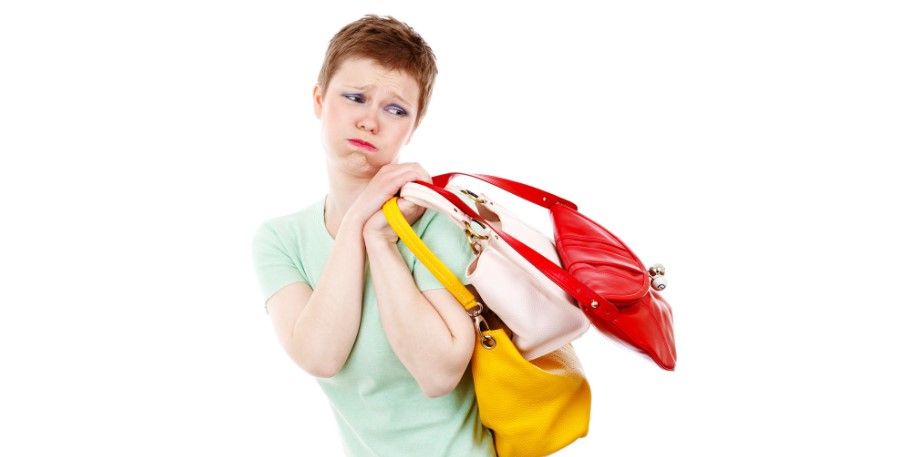
Sustainable Fashion and Consumer Behavior
Consumer habits are rapidly evolving as eco-awareness grows. Shoppers are no longer content with fast fashion but seek out sustainable, ethical alternatives:
- How shopping habits are changing in response to eco-awareness
Eco-conscious consumers are now considering the lifecycle of a product before purchasing, leading to more thoughtful consumption. Learn how these habits can boost your e-commerce business. - The impact of social media influencers on sustainable fashion
Influencers are powerful advocates for sustainability, using their platforms to showcase eco-friendly brands and products. This shift is helping to normalize sustainable fashion choices among mainstream audiences. - Strategies for encouraging sustainable consumer choices
Brands can encourage more sustainable shopping behaviors by offering transparency, eco-friendly products, and recycling programs. Consumers are increasingly supporting companies with clear environmental commitments.
The Surge of Second-Hand and Vintage Markets
Second-hand and vintage fashion are no longer niche—they’re becoming mainstream, thanks to a growing focus on sustainability and the circular economy:
- Why thrift shopping is becoming mainstream
Thrift shopping is a sustainable and affordable alternative to fast fashion, with many consumers turning to second-hand stores for unique and eco-friendly options. - Online platforms leading the charge in second-hand fashion
Platforms like Poshmark and ThredUp are revolutionizing the second-hand market, making it easier than ever to buy and sell pre-loved clothing. These platforms are reshaping how we view fashion consumption. - Vintage as a sustainable and trendy option
Vintage fashion allows consumers to enjoy timeless pieces while reducing their environmental impact. With its unique appeal, vintage fashion is fast becoming a stylish and sustainable choice for eco-conscious shoppers.
Circular Fashion: Closing the Loop
Circular fashion is an innovative approach that seeks to extend the lifecycle of clothing and reduce waste by encouraging recycling and take-back programs:
- Understanding the circular economy model in apparel
In a circular economy, garments are designed for reuse, repair, and recycling, reducing the need for new resources and minimizing waste. - Brands that have successfully implemented take-back programs
Companies like Patagonia have embraced circular fashion by offering take-back programs where customers can return old items for recycling or resale, contributing to a closed-loop system. - Challenges and opportunities in achieving circularity
Achieving true circularity in fashion is challenging due to the complexity of recycling textiles. However, innovations in fiber technology and consumer engagement are helping brands close the loop.
Sustainable Luxury: The New High-End Trend
Luxury brands are not exempt from the sustainability conversation. In fact, many are leading the charge by incorporating eco-friendly materials and practices:
- How luxury brands are embracing sustainability
High-end fashion houses are increasingly integrating sustainable practices, recognizing that eco-consciousness is not just for the mass market but is also becoming essential in luxury. - Innovations in sustainable luxury textiles
From organic silk to plant-based leather, luxury brands are experimenting with premium sustainable materials that don’t compromise on quality or exclusivity. - The growing demand for eco-conscious premium products
Consumers of luxury goods are increasingly demanding sustainable options, driving innovation in high-end fashion and setting new standards for premium eco-friendly products.
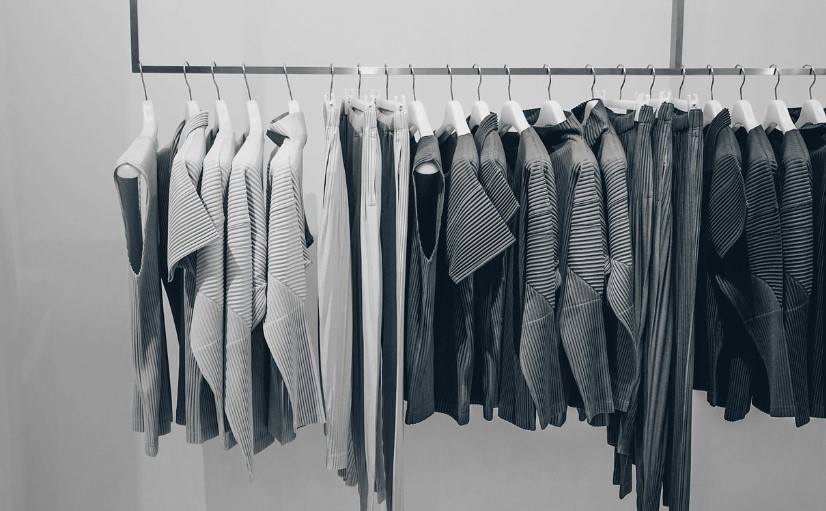
Kid’s Clothing Goes Green
Sustainability isn’t just for adult fashion—children’s clothing is also going green, with brands focusing on eco-friendly, non-toxic materials that are safe for young skin:
- Safe and sustainable materials for children’s clothes
Materials like organic cotton and bamboo are popular choices in eco-friendly children’s fashion, ensuring comfort and safety. - Brands that are making waves in eco-friendly kids’ fashion
Several brands are leading the charge in sustainable children’s wear, offering stylish, durable, and environmentally friendly options. - The long-term benefits of sustainable children’s wear
Investing in sustainable children’s clothing benefits both the environment and children’s health. These eco-friendly choices promote better practices in the fashion industry while safeguarding the future.
Eco-Friendly Activewear and Sportswear
The activewear and sportswear industry is catching up with the sustainable fashion movement, with brands increasingly opting for eco-friendly materials and practices that not only benefit the environment but also enhance performance.
- Developments in sustainable fabrics for sportswear
Sustainable innovations such as recycled polyester, organic cotton, and Tencel are being incorporated into sportswear, making it both high-performance and eco-friendly. Brands are leveraging these materials to create moisture-wicking, durable garments without harming the planet. - Eco-friendly practices in the production of activewear
Brands are adopting energy-efficient manufacturing techniques and waterless dyeing processes to minimize the environmental impact of producing sportswear. These methods not only reduce waste but also result in higher-quality garments. - Athletes and brands promoting green sportswear
High-profile athletes and influencers are using their platforms to promote sustainable activewear. Leading sportswear brands are partnering with athletes who advocate for eco-conscious lifestyles, bringing more attention to green sportswear options.
The Future of Sustainable Fashion
As we look beyond 2025, sustainable fashion is set to grow even more dynamic, with new materials and technologies paving the way for a greener industry.
- Predictions for eco-friendly trends beyond 2025
Expect to see a rise in biodegradable materials, lab-grown fabrics, and the expansion of rental fashion services. These trends indicate a future where fashion leaves a lighter environmental footprint. - Upcoming sustainable materials and technologies to watch
Innovations like algae-based fabrics, mushroom leather, and waterless dyeing techniques will play a crucial role in the next phase of sustainable fashion. These technologies are expected to revolutionize how clothing is made and disposed of. - How the fashion industry can sustain momentum in eco-innovation
Continuous collaboration between brands, governments, and consumers is essential to keep up the momentum. Brands can maintain sustainability by integrating circular economy principles, such as recycling and reusing materials, into their business models.
Creating a Sustainable Wardrobe
Building a sustainable wardrobe requires thoughtful curation of eco-friendly pieces and a commitment to maintaining them.
- Steps to transition to an eco-friendly closet
Start by auditing your wardrobe, donating items you no longer need, and investing in high-quality, sustainable pieces. Look for versatile garments made from eco-friendly materials that can be worn across multiple occasions. - Must-have sustainable pieces for 2025
Essentials like organic cotton tees, hemp jeans, and bamboo active wear should be on your radar for 2025. These materials are durable, comfortable, and have a minimal environmental impact. - Maintaining and caring for sustainable garments
Sustainable clothing lasts longer when properly cared for. Follow care instructions, wash garments with cold water, and avoid over-laundering to extend the life of your pieces. This not only reduces water usage but also keeps fabrics looking fresh longer.
Eco-Friendly Fashion Accessories
Sustainability doesn’t stop at clothing—accessories are also evolving to meet the eco-conscious demands of today’s consumers.
- Innovations in sustainable shoes, bags, and jewelry
From vegan leather shoes made from cactus and pineapple to bags crafted from recycled plastics, accessories are undergoing a green makeover. Jewelry brands are opting for responsibly sourced gemstones and recycled metals to reduce their environmental footprint. - Brands leading the way in green accessories
Brands like Stella McCartney and Veja are at the forefront of sustainable accessories, offering eco-conscious consumers stylish alternatives that don’t compromise on ethics. - How accessories fit into the sustainable fashion narrative
Accessories are an essential part of a sustainable wardrobe, complementing outfits while minimizing waste. By choosing eco-friendly options, consumers can contribute to the reduction of fashion’s environmental impact.
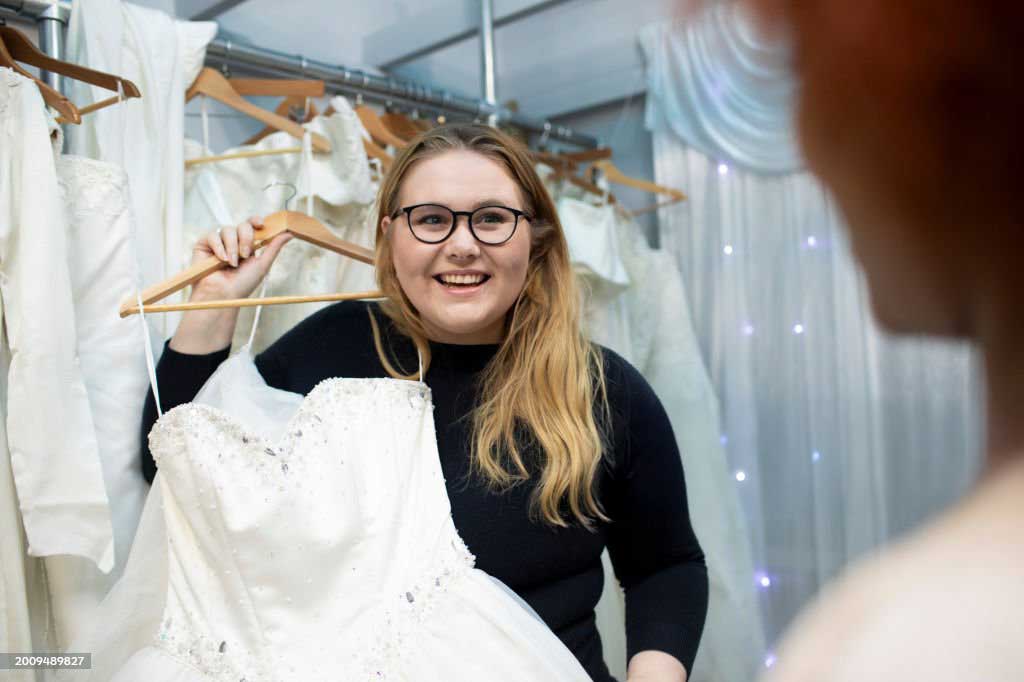
Bridal Wear Goes Green
Weddings are becoming more eco-friendly, with couples choosing sustainable options for their big day, including their attire.
- Trends in sustainable wedding dresses and suits
More designers are offering wedding dresses made from organic silk, recycled fabrics, and plant-based materials, allowing brides to walk down the aisle in gowns that are both beautiful and sustainable. - How couples are opting for eco-friendly weddings
Couples are embracing minimalism and sustainability, from choosing eco-friendly wedding attire to renting décor and supporting local, ethical vendors. Sustainable wedding trends are gaining traction as people seek ways to reduce the environmental impact of their celebrations. - Designers specializing in green bridal collections
Sustainable bridal designers are making waves with collections that emphasize craftsmanship, durability, and environmental consciousness. These designers are offering eco-conscious couples a chance to celebrate love while also caring for the planet.
The Impact of Global Policies on Sustainable Fashion
Governments and international trade policies are increasingly influencing the fashion industry’s sustainability efforts, promoting ethical practices on a global scale.
- How international trade policies affect eco-fashion
Policies that support sustainable production methods, such as incentives for eco-friendly materials and penalties for polluters, are driving change in the fashion industry. This helps brands adopt greener practices across their supply chains. - The role of government in promoting sustainable practices
Governments play a critical role in enforcing sustainability regulations, encouraging the adoption of ethical labor standards, and supporting initiatives that promote a circular economy in fashion. - Case studies of successful policy-driven sustainability in fashion
Countries like the Netherlands and Sweden are leading the way with policies that promote sustainable fashion through tax incentives, research grants, and public awareness campaigns.
Sustainable Fashion Events and Runways
Sustainability is increasingly visible on the global fashion stage, with eco-friendly fashion shows and events garnering attention.
- Highlighting eco-friendly fashion shows around the world
Events like Copenhagen Fashion Week and Helsinki Fashion Week are dedicated to showcasing sustainable designs, with brands and designers presenting eco-friendly collections on a global stage. - How sustainability is influencing major fashion weeks
Traditional fashion weeks are also being influenced, with more designers choosing to showcase sustainable collections, reducing waste, and focusing on ethical production methods. - Designers to watch at sustainable fashion events
Look out for emerging designers pushing the boundaries of sustainable fashion, introducing innovative materials and cutting-edge designs that prioritize environmental and ethical standards.
Challenges and Criticisms of Sustainable Fashion
While sustainable fashion is making significant strides, it faces criticism and challenges that need to be addressed for widespread adoption.
- Debunking myths and addressing criticisms
One common misconception is that sustainable fashion is always expensive. In reality, sustainable clothing often provides better long-term value due to its durability and ethical production standards. - The challenges brands face when switching to eco-friendly practices
Shifting to sustainable practices requires significant investment in new materials, technologies, and supply chains, which can be difficult for smaller brands. Larger companies face challenges in transitioning legacy systems to sustainable models. - Addressing the cost implications of sustainable fashion
Although sustainable fashion can be more expensive upfront, the long-term savings in durability and ethical value often outweigh the initial costs. Consumers are also becoming more willing to invest in higher-quality, sustainable pieces.
Conclusion: The Future is Green
2025 marks a pivotal moment for sustainable fashion, with brands, consumers, and policymakers all playing a role in driving change.
- Summarizing the shift towards sustainable fashion in 2025
With new materials, technologies, and eco-conscious consumers, the fashion industry is transforming towards greener practices. From luxury to sportswear, sustainability is no longer an afterthought but a necessity. - The role of collaboration in advancing green practices
Collaboration between brands, governments, and consumers is crucial for the sustainable fashion movement to continue gaining momentum. By working together, stakeholders can overcome challenges and promote a more sustainable future. - A call to action for consumers and industry stakeholders
Consumers must continue to demand transparency and sustainability, while brands need to innovate and push for eco-friendly practices. By making mindful choices, everyone can contribute to a greener, more ethical fashion industry.
For more insights on ghost mannequin techniques and services,
How We Helped an E-commerce Brand Increase Sales by 35% with Professional Retouching
When it comes to e-commerce, first impressions are crucial. A shopper’s decision to click “Add…
How to Use Ghost Mannequin Photography to Showcase Your Apparel Products
Empowering Success TogetherHow to Use Ghost Mannequin Photography to Showcase Your Apparel ProductsWe provide comprehensive…
Spring Fashion 2025: The Hottest Colors to Wear
Empowering Success TogetherSpring Fashion 2025: The Hottest Colors to WearWe provide comprehensive solutions and support…
Real Estate Photo Remote Editing: The Ultimate Guide to Enhancing Property Images
Empowering Success TogetherReal Estate Photo Remote Editing: The Ultimate Guide to Enhancing Property ImagesWe provide…
DIY vs Professional Ecommerce Photo Editing: Which is Right for You?
Empowering Success TogetherDIY vs. Professional Ecommerce Photo Editing: Which is Right for You?We provide comprehensive…
The Best Impact of White Backgrounds on Ecommerce Product Photography
Empowering Success TogetherThe Best Impact of White Backgrounds on Ecommerce Product PhotographyWe provide comprehensive solutions…
LET’S COLLABORATE TO ENHANCE YOUR PHOTO
OUR PROFESSIONAL PHOTO EDITING SERVICES READY FOR YOU!
Get the Awesome Quote!
One of the most important things is to pick the best professional photo editing services company.
Quick Peek at Our Quality!
Every issue that arises will be explained in detail. It’s time to start planning your adventures.



